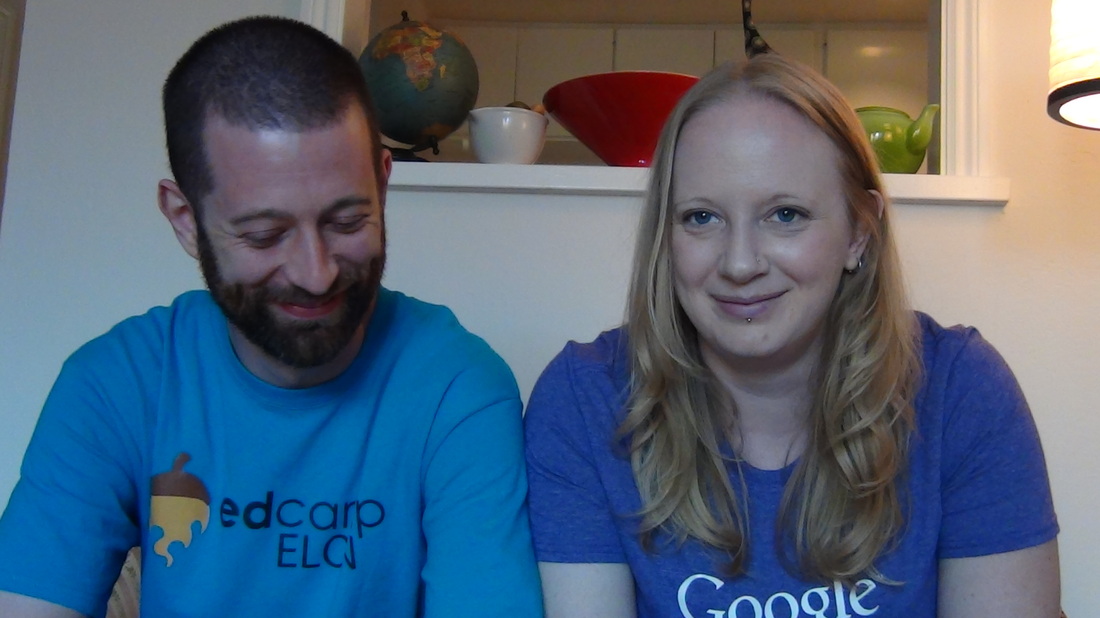Thank you for posting some concrete ideas for inquiry-based learning. I've just recently become obsessed with the flipped classroom. I read an article...which led to an article...which led to blogs and videos and all kinds of good stuff. I'm pretty familiar with the theory behind the model but it's so hard to wrap my head around what it looks like in real life, especially with the limited L.A. flip examples out there. Your blog has been so helpful in getting ideas for this upcoming school year. I'm excited to starting planning projects and units. Any advice for how to turn the typical classroom read/discuss/do some graphic organizers/test...into meaningful inquiry questions? I feel like all the questions I've been using for "essential questions" are unsuitable for inquiry. How did you make that shift?
Instead of just posting a response there, I decided to make this into a new post. So here you go, Audra. :-)
******
Inquiry has been on my brain constantly...seriously, when Ramsay challenged ELA teachers to figure out how to do inquiry in a meaningful way, I felt personally responsible for making it happen. I'm a little obsessive about teaching too...my life since January has been about the flipped classroom. I honestly didn't realise that very few teachers were doing it in English until recently. I just thought it fit for me, and worked for my kids.
My advice would be to make your brain think in two tracks: 1) skill-based and 2) thematic. Those can run simultaneously (i.e. in the same unit) or you could just do one of them. Both have themes and both have skills, but it's a helpful lens to add when you separate them out.
If the skill for the unit is analysing how genre shapes a narrative and the content is House on Mango Street, then here are a few essential questions:
1. How much of HOMS is fictional? How does genre shape the text? (skill)
2. What does it mean to be home? How is the idea of belonging/not belonging shown? (theme)
Now, both of them have skill and both have theme. #2 is a better inquiry question because there's no right answer. #1 is still okay though, because it can be applied directly to the text, and can have lots of possible answers.
Fundamentally, I think both can work for EFA:
EFA for #1:
E: research Cisneros and come up with a rough narrative of her life (bonus: biography writing!)
F: video on different genres and features of those genres
A: using the knowledge they gained from explore phase and terminology from flip phase, compare/contrast the novel to Cisneros' biography and write that up into a formal essay
EFA for #2:
E: Have students write about their own community/home/school or wherever they feel they "belong." Write a personal narrative/descriptive essay on their idea of home/belonging
F: Model finding examples to fit a theme, or revising a narrative essay, or features of a good narrative essay (that could go hand-in-hand with #1)
A: read the book and find Cisneros' definition of home, and either compare it to their own, or do a project that analyses/reflects on her ideas about belonging/not belonging within cultural/linguistic/religious lines.
If I combined them into one, it would look like this:
E: Have students research Cisneros' life. Read several chapters from HOMS that have thoughts on home and what Esperanza thinks about her home.
F: video on features of different genres, video on compare/contrast essay, video on narrative technique from HOMS
A: Compare her thoughts on home to their own experience of home and complete a project/essay/presentation about that. Compare Esperanza to Sandra Cisneros and talk about how the genre of fiction changes how Cisneros presents her own life experiences
I hope that helps Audra, as well as anyone else confused about how to build an EFA unit. I'd be happy to do requests if anyone has a skill/text in mind...that may make it easier to conceptualise! :-)
Thanks to everyone who has been reading and commenting on my blog. I really appreciate the feedback, and I feel much more prepared for next year already!


 RSS Feed
RSS Feed
